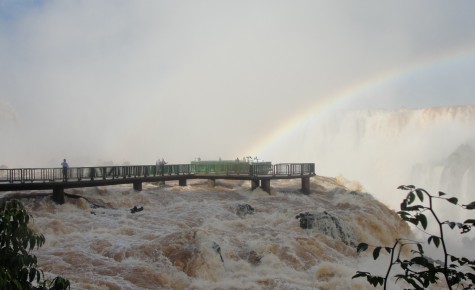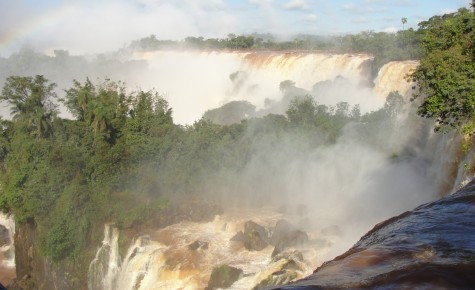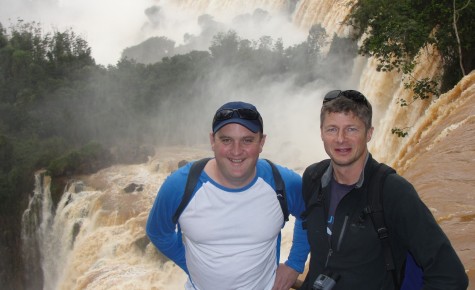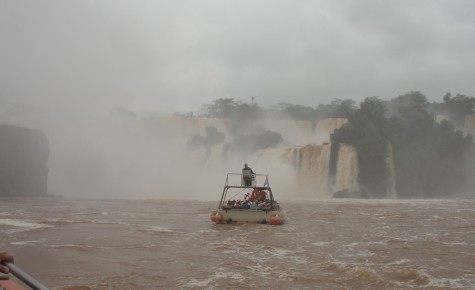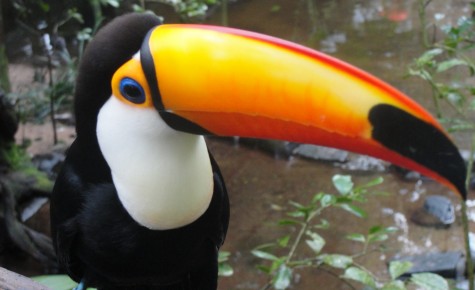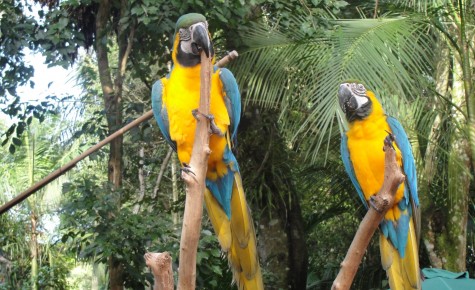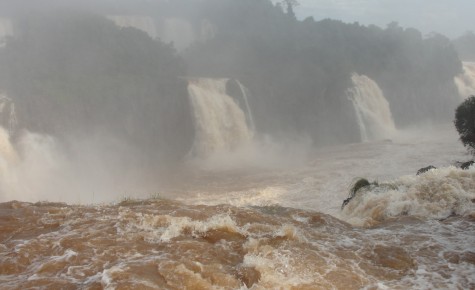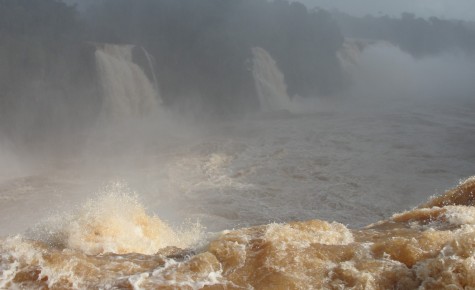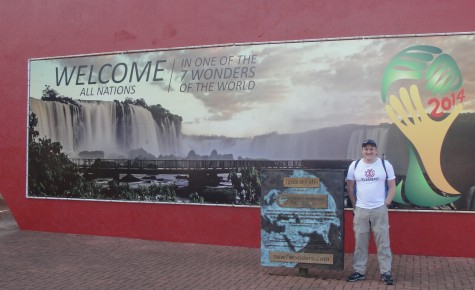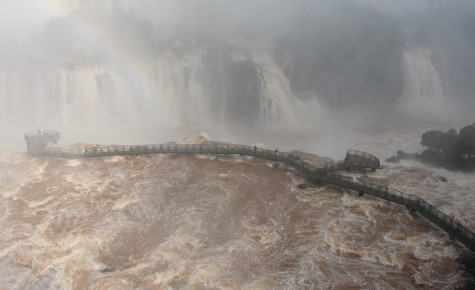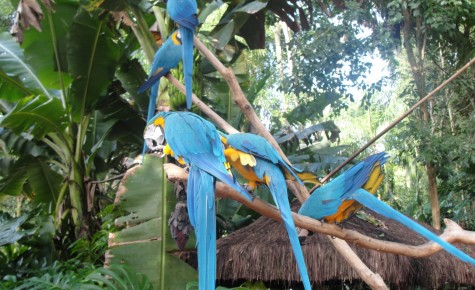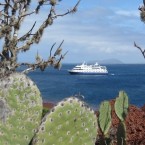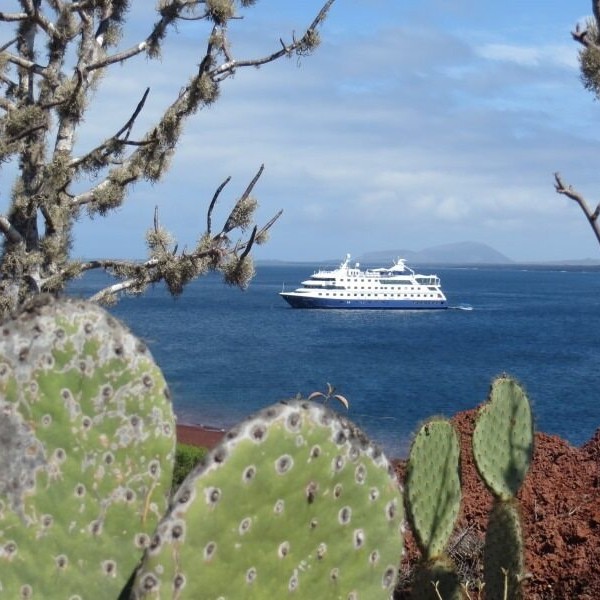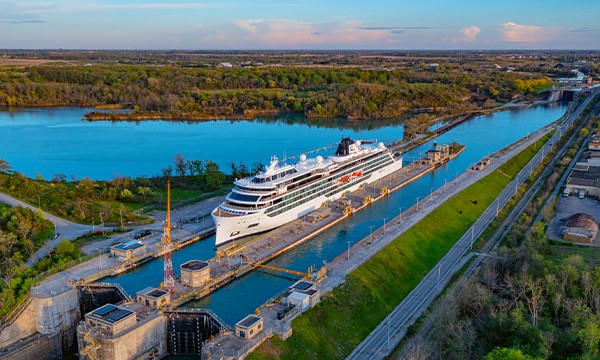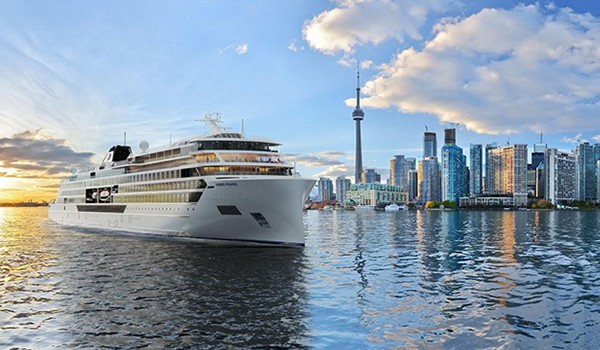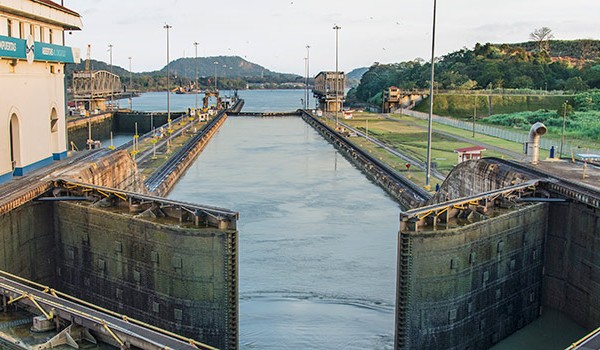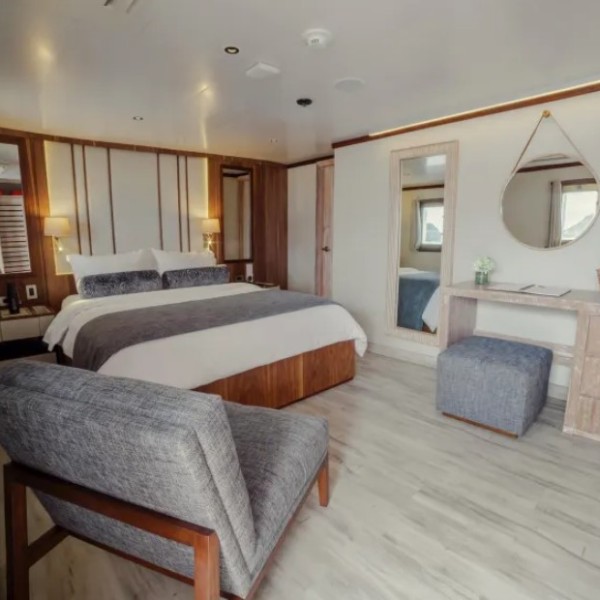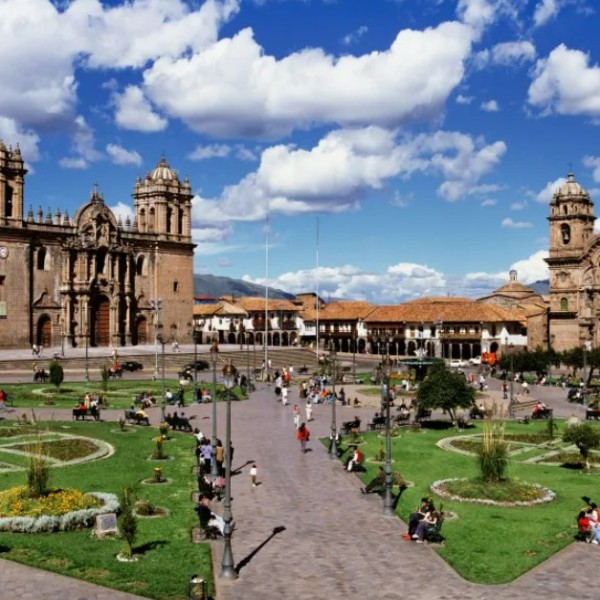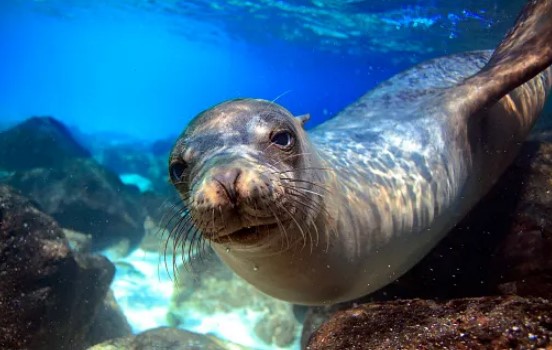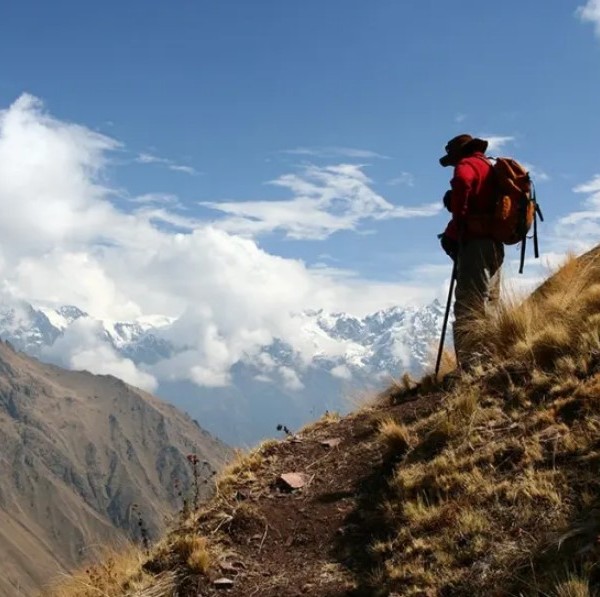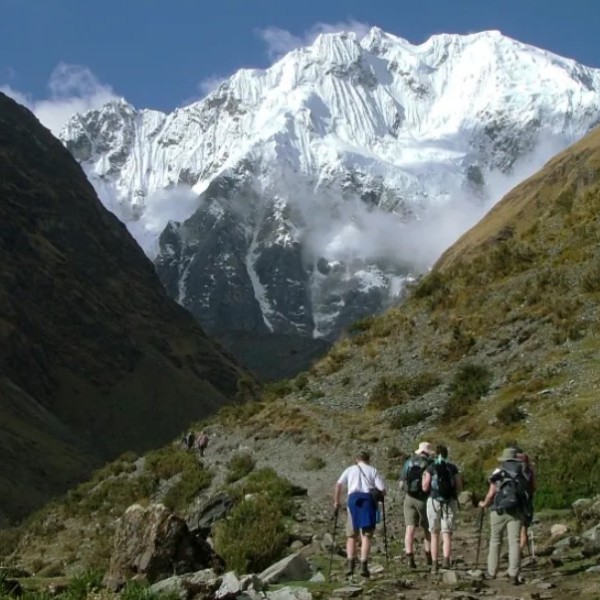I had the privilege to visit both the Argentine & Brazilian sides of the majestic Iguassu Falls in June last year, and can highly recommend this extraordinary experience. Iguazu means ‘big waters’ in the local Guarani language – which is something of an understatement! It’s a sequence of hundreds of separate waterfalls – varying from 270 in ‘wet’ months to a minimum of 150 on dry days – so quite different to the “big drops” you see at Victoria or Niagara Falls.
The Falls straddle the border between Misiones Province in Argentina and Parana State in Brazil with the Tancred Neves Bridge over the Iguazu River the link between the customs posts on either side. The two countries formed National Parks here in the 1930’s and it was declared a UNESCO World Heritage area in the 1980’s. The bridge rails are painted blue and white on the Argentine side and yellow and green on the Brazilian side!
There are only two hotels within the Park – both are 5* and offer great views of the Falls – the impressive and very characterful (pink!) Das Cataratas Hotel in Brazil, and the Sheraton in Argentina – but there are plenty of cheaper options also in the nearby city of of Foz de Iguassu in Brazil and the much smaller town of Puerto Iguazu in Argentina. There are airports on both sides, so you can fly from Buenos Aires or from Rio, or combine both cities with a visit to the Falls in the middle!
The water flow had been measured at the highest ever level recorded just a week before I arrived – a staggering 47,000 cubic metres per second (it’s usually around 1,750) and the National Park had been closed for a few days as there had been some damage to the boardwalks and viewing platforms. On the day we arrived on the Argentine side, the water level was still an amazing 12,000 cu m per sec, and the 1100m long Devil’s Throat walkway, 650m long Upper Trail and Ecologic boat Tour on the Iguazu Upper River were temporarily closed.
However, I really enjoyed seeing the coatis and monkeys along the 650m Green Trail through forest to the Falls, and then the great views of the Falls from vantage points on the 1600m long Lower Circuit. When water levels are much lower, you can access San Martin Island from here. The Argentine side allows visitors to get very close to the Falls – the boardwalks involve several sets of stairs between Upper and Lower Trails and you’ll get soaking wet in places, especially if you take the ‘Great Adventure’ boat trip up to the base of the Falls on the lower Iguazu River, which was great fun and highly recommended!
The Brazilian side of the Falls also boasts the remarkable Bird Park which would have to rank as one of the best places in South America to walk among tucans, parrots and macaws – the Bird Park opens at 830am, so I’d recommend getting there early while its quiet and then visiting the Falls afterwards. Allow at least two hours to enjoy this surreal and rather magical place.
The Brazilian side has even more of a ‘wow’ factor in that you are elevated, and it is an easy walk along the boardwalks of the Cataratas trail, which offers many panoramic balconies – the view starts impressive, and just keeps getting better around each corner until you reach the 27m high Naipi Spot elevator at the end of the boardwalk. Here you can also brave the amazing Devil’s Throat Balcony – you are quite literally standing in the middle of the Falls, in front the middle of the biggest waterfall in the Park, 90m high – this was simply breathtaking and another ‘must do’ – these images give you some idea of the sheer volume of water we witnessed.
I’d highly recommend that all our clients exploring South America should try to make it here – it’s really that good – and try to give yourself two full days here so you can visit both sides.





